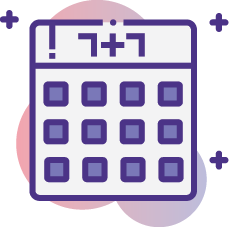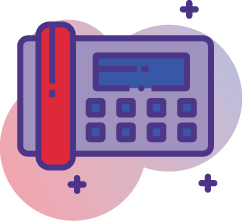 It feels as if KPIs were the buzzwords of 2021. I heard about them everywhere. It seems as if the world is focused on Key Performance Indicators. Goal setting is passe, and KPI tracking is in vogue.
It feels as if KPIs were the buzzwords of 2021. I heard about them everywhere. It seems as if the world is focused on Key Performance Indicators. Goal setting is passe, and KPI tracking is in vogue.
However, if you are an administrative professional, you’re in a bit of a black hole as far as KPIs, as our roles generally don’t have the same focus on metrics. We understand SMART goals and strategy, but we tend not to have interim measurements. We achieved the goal, or we didn’t.
Goals are objectives, such as losing weight, getting in shape, improving response time to emails, increasing sales, or getting your professional certification.
KPIs aren’t goals. They aren’t a desired outcome. KPIs are metrics. You use a KPI to see how well you are doing while working towards the goal. We’ve all heard the expression, “What gets measured gets done.” KPIs are the measurement component of goals.
KPIs aren’t goals. KPIs are metrics to see how well you are doing while working towards a goal.
For instance, if you want to achieve your professional certification in 2022, that is your goal. Your KPIs are how you measure to ensure you achieve the results you need. A KPI might be that you registered to attend a conference, and another would be that you joined an association or paid the deposit to write the exam.
You can say that it leads you towards the goal, but it isn’t a goal in itself. While they are important, KPIs are only useful if you identify the right ones for you.
Here is how you select your KPIs:
- Start with your big goal(s). Maybe you want to completely reorganize your email system, your organization with all your files, create an office procedures manual, improve your response time to emails, the amount of time you are working each day (especially if you are working a lot of overtime), your education, your job title, your salary, your savings account, removal of credit card debt, and so on.
Start with your strategic planning exercise the same way you would if you were a large company. Look at your 2022 calendar and ask yourself, “What do I want to achieve in this calendar year?”
- Ask questions. Hard questions. What will you need to do to achieve that goal? Your KPIs need to be linked to your strategy.
If your big goal is to create an office procedures manual, you would have to ask many questions such as, “What are the tasks that I perform each day, week, or month? What would someone need to do if I weren’t in the office? What are others relying on me to do so they can do their job?” What do I need to do to achieve my goal? What steps are required? We know that we need to break our goals into achievable bite-sized pieces. Ask questions to determine those pieces.
If your goal were to pay off your credit card debt, you would need to identify what you are using your credit card for each month, what you are spending on that isn’t mandatory, why you don’t have enough money each month to pay the balance.
- How will you measure those bite-sized pieces? Create your measurement criteria. Each KPI is a step towards the goal, but it needs to be measured (remember KPIs are metrics.)
Each answer to the questions you’ve asked in Step 2 should help you achieve your overall goal. When you break your goal into many steps, you make it easier to achieve. We need to measure if we are doing those steps or not. Not a simple yes/no measurement, but a benchmark or metric. If you have benchmarks to achieve, those are KPIs.
If your goal is to ensure you empty your inbox each night (inbox zero), then a KPI you could measure might be how many unread emails are in your inbox at the end of the day or how many emails you receive each day (not a yes/no question, “Is my inbox empty?”). If your KPI is unread emails and you track that number for a month and notice that the unread number keeps increasing, it is safe to say that you are not on your way to achieving your goal of inbox zero.
When I was preparing for my #AdminsRock Conference for 2022, I created my project plan, which includes goals, and of course, many KPIs.
Here are some of the things I measured:
- Registration metrics. I can track how many people registered prior to any advertising, after one email or multiple, if they came from social media or referral etc. I want to know what method of advertising is the most successful for me.
- Timing of registrations. When we launched the 2021 #AdminsRock conference, it was always scheduled to be virtual. Since that allows a lot of attendee flexibility, I could track if people registered early (and at which rate they paid to attend vs if they registered last minute.)
- Social media engagement. Since I have a private Facebook group for attendees, I track how many attendees register to belong to the group vs registration numbers. I measure the engagement of the group by tracking the number of likes or comments.
- First time attendees. I track how many attendees have not only never attended one of my conferences, but how many of them have never attended any events with me previously.
- Repeat clients. How many of the registered attendees have attended a previous event with me indicating they are loyal customers. I also track how loyal they are by how many events they’ve attended.
- Attendee satisfaction. At the completion of the event, I send out surveys to evaluate everything we do. I have a benchmark number for each workshop, keynote, the materials they receive in advance, the communication etc.
- Video viewing. When you attend my conference, you get the recording for 60 days. I can track how many views are each day. Do people tend to watch it immediately for reference or later for reminder? This will tell me if 60 days is enough for me to offer or if I need to change that too.
- Revenue vs overhead. How much did I spend vs the total income brought in? Did I run the conference at a profit, and if so, how does that compare to previous years? If I ran it at a loss, where were my unexpected costs? How does that measure to other events I have ran?
Keeping very focused on what I need to do allows me to achieve my goals for my #AdminsRock conference. The goal of launching a conference itself wasn’t enough for me; I needed the KPIs to focus on to ensure I was on track with the goal. As you can imagine, it is a lot of work. KPIs and goals help me determine if I am not only doing it right, but if it is worth doing.
[ctt template=”3″ link=”4pi8e” via=”yes” ]Once you get KPI focused, you will find that goal setting itself is too boring, and it is really the KPI metrics that keep the motivation going![/ctt]
Start by creating your own goals and KPIs to ensure you fully understand them. Once you get KPI focused, you will find that goal setting itself is boring, and it is really the KPI metrics that keep the motivation going!
This article first appeared in Executive Support Magazine, a global training publication and must read for any administrative professional. You can get a 30% discount when you subscribe through us. Visit the website www.executivesupportmagazine.com to find out more or to get your 30% discount email sdouglas@executivesupportmedia.com and tell them I sent you!









